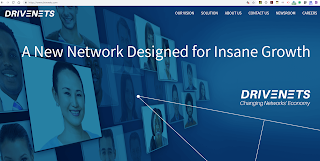Microsoft launched an initiative called "Azure for Operators" that will provide core infrastructure to network operators.
The strategy aims to harness the power of the intelligent edge, connected by high-bandwidth fiber or 5G, to create new opportunities and better efficiencies for communication service providers.
Microsoft Azure for Operators is built on the company's recent acquisitio of Affirmed Networks and Metaswitch, as well as on its development of Azure Edge Zones, which are local extensions of Azure, deployed with carriers or as private infrastructure.
Jason Zander, Executive Vice President, Microsoft Azure, states "By harnessing the power of Microsoft Azure, on their edge, or in the cloud, operators can transition to a more flexible and scalable model, drive down infrastructure cost, use AI and machine learning (ML) to automate operations and create service differentiation. Furthermore, a hybrid and hyper-scale infrastructure will provide operators with the agility they need to rapidly innovate and experiment with new 5G services on a programmable network."
In a blog posting, Zander acknowledges that operators will want to have the control and visibility necessary to manage their unique industry requirements. Microsoft's network already connects with operators at more than 170 points of presence and over 20,000 peering connections around the globe.
Azure for Operators partners include Accenture, Asco’s, AT&T, Etisalat, HPE, Intel, Mavenir, RedHat, Samsung, Tech Mahindra, Telstra, Tillman Digital Cities, Verizon and VMWare, in addition to Microsoft’s own Affirmed and Metaswitch.
Microsoft to acquire Metaswitch, extending its reach into telco cloud
Microsoft agreed to acquire Metaswitch Networks, a long-time leader in providing high-performance software to the communications industry. Financial terms were not disclosed. Metaswitch has been a pioneer in cloud-native solutions for telecom operators. Its range of solutions include:
Metaswitch has been a pioneer in cloud-native solutions for telecom operators. Its range of solutions include:
- VoIP softswitches and gateways
- VoLTE/VoWiFi
- Voice and VoLTE interconnect
- IMS core deployments
- Session Border Control
- Robocall blocking
- Converged voice and data messaging
- Group Communications and Collaboration
- Cloud contact centers
Microsoft to acquire Affirmed Networks for telco cloud vEPC
Microsoft agreed to acquire Affirmed Networks. Financial terms were not disclosed.
Affirmed Networks, which is based in Acton, Massachusetts, supplies virtualized Evolved Packet Core (vEPC) solutions for mobile operators.
Affirmed’s virtualized evolved packet solution capabilities include CUPS, 5G NSA, network slicing, integrated virtual probe, virtualized DPI, GiLAN, analytics and security services, virtualized Wi-Fi, and service automation platform. The company claims 76 deployments, including announced projects with AT&T, Etisalat, and Vodafone.
Microsoft Azure Edge Zones previews with carriers
Affirmed Networks, which is based in Acton, Massachusetts, supplies virtualized Evolved Packet Core (vEPC) solutions for mobile operators.
Microsoft said Azure Edge Zones and Azure Private Edge Zones will enable:
- Development of distributed applications across cloud, on-premises, and edge using the same Azure Portal, APIs, development, and security tools.
- Local data processing for latency critical industrial IoT and media services workloads.
- Acceleration of IoT, artificial intelligence (AI), and real-time analytics by optimizing, building, and innovating for robotics, automation, and mixed reality.
- New frontiers for developers working with high-density graphics and real-time operations in industries such as gaming.
- An evolving platform built with customers, carriers, and industry partners to allow seamless integration and operation of a wide selection of Virtual Network Functions, including 5G software and SD-WAN and firewalls from technology partners such as Affirmed, Mavenir, Nuage Networks from Nokia, Metaswitch, Palo Alto Networks, and VeloCloud By VMware.
By connecting Azure services directly to 5G networks inside the carrier's data centers, applications will benefit from significantly reduced latency,
























